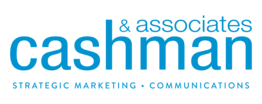May 6, 2019
Create More Flow
The C&A team hasn’t been able to stop thinking about Dr. Camille Preston CEO of AIM Leadership since our annual company retreat in March. Our multi-day, offsite personal & professional development sessions – this year in Newport, Rhode Island – kicked-off with an interactive and informative seminar on “flow.” Just what is “flow?” Read on to learn more about Dr. Camille Preston and her tools for creating more bandwidth and optimizing performance.

C&A: Can you define what getting in the “flow” means and why it’s so important?
CP: Flow is the neurological state of peak performance where your brain is firing on all cylinders and you are delivering outstanding results. The same neurological patterns of Flow happens at work, in creation (cooking, music, etc), and in athletics. Recent advances in neuroscience have helped us understand what causes flow and more importantly, how to recreate it more often. If more and more people are finally turning their attention to flow, it reflects a confluence of factors ranging from a deeper understanding of how the brain works (thanks to modern neuroscience) to technological and economic shifts to the ongoing restructuring of the workplace and changes in the nature of work itself.
C&A: What are the stages of “flow”?
CP: As we better understand flow, we realize that it is not an on or off state but rather about certain habits/behaviors that can increase our time in flow. At AIM Leadership we’ve identified a 5-stage process to increase your time in flow:
- Prepare: It’s essential to take perspective, develop clarity on outcomes, and optimize your work environment.
- Struggle Purposefully: This is about intense, focused work to build knowledge, muscle, skills and capabilities
- Release: After working in short sprints, give yourself a break. This is about shifting gears, catching your breath, and bringing your neurochemistry into balance after hard work.
- Flow: You’ll know you’re in flow because everything will be clicking into place. As you focus, engage, and combine old ideas, embrace the new possibilities that arise.
- Recover: Flow feels so fantastic that we can’t help but want more, but resting is essential. Schedule downtime. It’s just as critical as preparation, struggle, release and, of course, flow. But this is virtually ignored in corporate America.
C&A: You spoke to us about the theory of biological prime-time at our retreat. Can you summarize this for our blog readers?
CP: We each have a biological prime time when you’re most focused, most productive, and able to think most deeply. Personally, I’m at my best when I’m up and working by 4:30 am. My spouse isn’t a morning person, so I have this first hour or two of the day to myself. Before my spouse and children wake up, I’m thinking deeply about what will happen over the next fifteen or sixteen hours and putting everything in place for the day.
We need to understand our biological prime time and then harness the power of this by blocking out that time for deep thinking.
This is all about knowing your ideal triggers for flow so you can stack success. It begins by asking yourself, “What do I need to work and think at my best? Is it a quiet space? A standing desk?”
C&A: Can you share some tips on how to find your biological prime time?
CP: Download this log and track your time over a week. Note where and when you feel at your best, what you are working on, and what the conditions are around you. It is part knowing the time of day that is your prime time and part scheduling your most impactful deep work for during this time.
C&A: What are your go-to podcasts?
CP: This is not my strongest suit. I have a limited commute and use running for my meditation. When I do listen to podcasts, I am a surfer. Master of Scale, On Being, and The Moth are a few of my favorites. It’s a great way to acquire and share information.
C&A: Who inspires you?
CP: Just like I don’t believe we have “one mentor” but many, I feel blessed by people who are deeply committed to being their best, to serving others, delivering results, and to walking the talk. Recently, I have been humbled to my core by the courage, compassion, and tenacity of a dear friend parenting her trans male son. It has opened my eyes to bias, to the assumptions we make being in the majority, to unseen barriers, and the necessity of learning compassion. Being witness to her courageous compassion on this journey, I am a better person.
C&A: A recent Forbes article you wrote titled “Build The Bandwidth You Need To Reflect, Focus And Flow” mentioned the “growth mindset.” Can you tell us more about that?
CP: I’m a raving fan of Carol Dweck’s widely-acclaimed book, Mindset. She differentiates people as having either a fixed or growth mindset. People with a fixed mindset tend to avoid feedback, get disappointed by setbacks, and take criticism personally. By contrast, individuals with a growth mindset seek out feedback, are eager to learn, and are constantly adapting over time. Perhaps, more importantly, leaders with a growth mindset create this culture within their organizations. This simple concept can transform an organization. If you’re not open to growth, if you think something can’t happen, it won’t and that attitude is contagious. If you’re a leader with a fixed mindset, you risk immobilizing your team. On the flipside, if you lead with a growth mindset, you’re setting the wheels in motion for greater creativity, productivity and growth over time.
C&A: You talk about fostering an Internal Locus of Control. Can you give us some steps to achieve this?
CP: I sometimes meet remarkably accomplished people who are trying to control things they can’t control. At work, this might mean attempting to micromanage every small detail of your organization rather than focus on larger and more important decisions. In your personal life, this might mean attempting to change a spouse or even a friend in some profound way rather than accepting that they will never become the person you want them to be. Finding your locus of control is about identifying what you can control and shifting your energy away from attempting to control those things that aren’t ever going to be in your hands.
C&A: What’s the best piece of advice you’ve ever received?
CP: You can’t paint a chair when you’re sitting in it! Sounds obvious but when you start to apply this maxim to your life, it says so much more. If you’re in something, you lose perspective. Getting external perspective, a second set of eyes, can be essential to optimize, align and accelerate outcomes. When it comes right down to it, this is what a good coach does–they can help you gain the perspective that gets lost when you’re in the chair, so to speak.
C&A: You’re the author of two successful books, any plans for a third?
CP: I recently received feedback from a very dear friend that I need to open another line of business. “With 15 years of experience, you are more than a coach and trainer–you are a trusted advisor and strategic advisor. Let people tap you at your best.” Over the past year I have been doing more work with teams and changing organizational systems.
Both of my earlier books, Rewired and Create More Flow, were born out of my own discovery of working with clients in a rapidly shifting economy–one where change is a constant. As I scale my own learning to better support today’s leaders and their teams, I’m engaged in deep research. This is part of my writing process so my guess is that my next book will focus on teams and organizations more broadly.
To learn more about Dr. Camille Preston and her book Create More Flow, visit her website.



